
-
I did a series of tests with QB 9b to see what was the cleanest. Info on vimeo.
-
Very interesting. Thanks for spending the time and sharing the results!
-
640 seems by far to be the cleanest - is this possibly the GH2's native ISO? The noise on some of the other ISOs is really shocking.
-
seems logical. GH2 native iso in photo mode is the 160. in video mode 4 pixels bin in to super pixel so the native iso becomes the 640 as well as sony f3 or canon c300 .Native ISO is the highest such ISO of a camera, at which the analog signal is not amplified before the conversion in digital.
-
What is a “native ISO” as applied to the GH2, though? How are we defining it? (Or, rather, how would Panasonic define it?) Signal gain = 1? Equal number of stops up and down before clipping? The greatest signal-to-noise ratio (subjectively speaking, of course)? The EI (exposure index)?
Also, notice how 320 looks almost as noisy as 1250 in the enhanced lows test.
-
I will certainly be avoiding 320 from now on with this setup! I was wondering why some of my footage was turning out like crap, and that wast why. I came from using the 7D which was clean at 320, and assumed this was the case with the gh2. Oops. Although someone suggested that 320 was good with firmware 1.1 and HBR mode. Also note that this test really only shows what happens when you push footage to extremes in post.
-
I discovered that there is a bug when I did the noise test for the GH2, that when going from a lower iso to 320 it is very noisy, but not when going the opposite, so one has to choose a higher iso and go down for it to work.
But reading the comments it says you did that, so iso 320 might just be very bad?
And from here it looks as we said that 640 is the cleanest, which is GREAT news!
-
@yeehaanow thank you for this test.
It was interesting that iso 160 held up pretty well until the highlight test (and good to know as I need it for shallow DOF work in interviews -- where I avoid highlights for the most part anyway).
Did a quick comparison with a spreadsheet to take notes on different ISOs in low mid and highs and my conclusions from your test are:
640 is the best all rounder, 3200 or 4000 are best for low light (800 - 2500 and 5000 up all seem to have lots of noise in lows and mids) and that 160 is acceptable but not in situations with lots of highlights (ie a light blue sky) where it looks like you get some pretty bad banding -- so in those situations, if you don't have the right nds to get up to 640, 250 appears to be your best bet -- you'll get more noise in the lows than 200 but less chance of banding, and in such an environment (eg out door wides).
A fair summary?
-
Great test, thanks! I may have to bookmark this page!
-
HI JDN- Good summary. The banding on the 160 test is not fair though. It's a crop of the corner where the light was most uneven. So there was about a stop difference between the edge and center (that you can't see). Plus when you look at the originals, or with light contrast enhancement, it doesn't show up nearly as much or at all. That heavy enhancement is so far out of the 'real world' that you would probably never see that. I just did another big test of a scene that contains a full spectrum of colors, gradients, highlights, and lows. I concentrated on a few select iso's, and went between Qv9, 1.1, and different picture profiles. Getting it together will take a little time. :) Going to go try other patches now...
-

 before1.png151 x 200 - 33K
before1.png151 x 200 - 33K
 after1.png157 x 202 - 35K
after1.png157 x 202 - 35K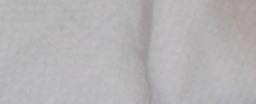
 before2.png405 x 104 - 44K
before2.png405 x 104 - 44K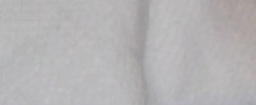
 after2.png398 x 105 - 44K
after2.png398 x 105 - 44K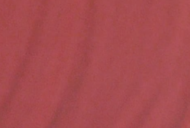
 before3.png311 x 210 - 70K
before3.png311 x 210 - 70K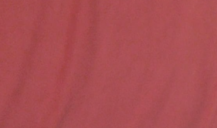
 after3.png370 x 218 - 85K
after3.png370 x 218 - 85K -
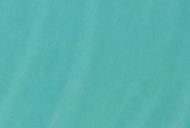
 before3Invert.png311 x 210 - 57K
before3Invert.png311 x 210 - 57K -
This is an interesting experiment, but it doesn't jive with what my eyes are telling me when I shoot real-world subjects.
Lower ISOs have less noise, with a few exceptions that you'll only notice if you're looking very carefully:
ISO 640 is a bit less noisy than ISO 500 if you're stepping down from 800 (avoiding the ISO bug), and a little bit noisier than 800 if you're stepping up from 500 (invoking the ISO bug). But ISO 640 is less noisy than 1000 and more noisy than 400, no matter what.
Same thing for ISO 320 and its neighbors. And ISO 4000 is a tiny bit noisier than ISO 5000.
So avoid ISO 250, 500, and 4000, and be careful of the bug at 320, 640, and 1250. Otherwise, lower is better.
-
What about DR? Does it follow noise levels?
And the ISO320 bug does also happen with it's multiples (like 640)?
-
@balazer - I did some more extensive "real-world" testing and I pretty much agree with you. There was no significant difference in the noise patterns other than there being more noise as you increase ISO. It was highly dependent on exposure levels, to a finer degree than the on-camera meter will show you. In that sense it makes it really difficult to do a perfect test, because a contrast/enhancing (noise enhancing) filter is very sensitive and one tick ether way would show me different results. Not to mention all the other variables. Are there really magic ISO's? Bad ISO's? I'm not so sure. I think the jury is still out on this one.
-
Also, I did some testing between picture profiles and it seems like standard was the least noisy, but since Smooth appears to boost the blacks and mids, they do look similar when luma matched in the editor.
-
Well, I've learned my lessons about not using Cinema under hard lighting (the sun). Stick with Smooth since it does lift up the lower mids and shadows. If you try to pull this up in post, detail will either be lost or you will still raise up the noise levels trying to recover shadows in post.
Cinema is excellent under controlled soft lighting, very smooth response through the higher-mid tones (skin levels). Watch those shadows though, they can crush on you.
-
what about 720p?
Howdy, Stranger!
It looks like you're new here. If you want to get involved, click one of these buttons!
Categories
- Topics List23,993
- Blog5,725
- General and News1,354
- Hacks and Patches1,153
- ↳ Top Settings33
- ↳ Beginners256
- ↳ Archives402
- ↳ Hacks News and Development56
- Cameras2,368
- ↳ Panasonic995
- ↳ Canon118
- ↳ Sony156
- ↳ Nikon96
- ↳ Pentax and Samsung70
- ↳ Olympus and Fujifilm102
- ↳ Compacts and Camcorders300
- ↳ Smartphones for video97
- ↳ Pro Video Cameras191
- ↳ BlackMagic and other raw cameras116
- Skill1,960
- ↳ Business and distribution66
- ↳ Preparation, scripts and legal38
- ↳ Art149
- ↳ Import, Convert, Exporting291
- ↳ Editors191
- ↳ Effects and stunts115
- ↳ Color grading197
- ↳ Sound and Music280
- ↳ Lighting96
- ↳ Software and storage tips266
- Gear5,420
- ↳ Filters, Adapters, Matte boxes344
- ↳ Lenses1,582
- ↳ Follow focus and gears93
- ↳ Sound499
- ↳ Lighting gear314
- ↳ Camera movement230
- ↳ Gimbals and copters302
- ↳ Rigs and related stuff273
- ↳ Power solutions83
- ↳ Monitors and viewfinders340
- ↳ Tripods and fluid heads139
- ↳ Storage286
- ↳ Computers and studio gear560
- ↳ VR and 3D248
- Showcase1,859
- Marketplace2,834
- Offtopic1,320







